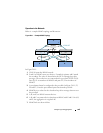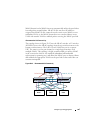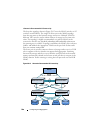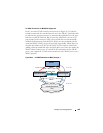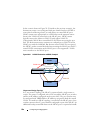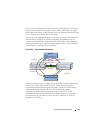
944 Configuring Link Aggregation
When the peer-link is configured, the MLAG component disables learning
on the port-channel configured as the peer-link.
4
Configure
DCPDP
(optional):
a
Configure a VLAN routing interface and assign a local IP address
(different from the peer address).
b
Configure the peer-switch IP address (the destination IP address)
c
If needed, configure the UDP port number to send and receive the
protocol messages.
d
Configure the source IP address
e
Enable the protocol. The protocol starts running if MLAG is globally
enabled.
vlan 100
interface vlan 100
ip address 192.168.0.2 255.255.255.0
exit
vpc domain 1
peer-keepalive destination 192.168.0.1 source 192.168.0.2
peer detection enable
exit
5
Configure the MLAG partner interfaces:
Configure a port-channel as an MLAG interface and assign to a VPC. Each
MLAG must have a unique VPC ID and the VPC configuration must be
identical on both switches. The port-channels on the MLAG peer must be
assigned to the same VPC ID. However, the member ports for the port-
channel may be different. The administrator must ensure that the port-
channel configuration on both the switches is in sync before enabling
MLAG. After the MLAG interfaces are enabled, the MLAG interfaces are
operationally disabled for a brief period while the MLAG component
exchanges information regarding the port members that constitute the
port-channel on each device. Once this information is populated on both
devices, the MLAG interfaces are operationally enabled and traffic
forwarding on MLAG interfaces is allowed.
The secondary switch forwards all BPDUs/LACPDUs received on the port
members of the MLAG interface to the primary switch over the peer-link.
Events related to MLAG interface and their port members are forwarded






